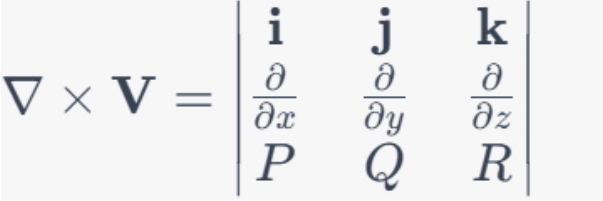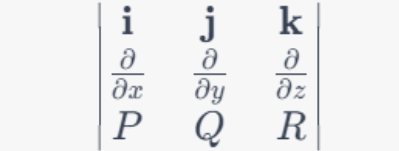Curl Calculator
Find the curl of any vector in a coordinate system using the curl Calculator. It can find curl with or without points.
How to use this tool?
The curl calculator is operated by completing the following steps.
- Select the type of answer you want i.e. With or without points.
- Enter the scalar functions of the 3 directions.
- Input the value of points x,y, and z.
- Click Calculate.
What is the curl of a vector?
The curl of a vector field is a measure of its rotational "twisting" at any given point. It's a vector quantity that gives the axis about which the vector field rotates, as well as the magnitude of the rotation.
The idea behind the curl of a vector field is to quantify the tendency for the field to rotate about a point.
It's like sticking a tiny paddlewheel or a windmill into the field and observing how and whether it spins. If it rotates, the vector field has a nonzero curl at that point. The axis and speed of that rotation are what the curl captures.
Mathematical Representation:
The curl of a vector field V is often denoted by ∇×V. The symbol ∇ is called the "del" or "nabla" operator and is a shorthand representation for the spatial derivatives with respect to each of the cartesian coordinates:
∇ = ( ∂/∂x i + ∂/∂y j + ∂/∂z k)
Here, i,j, and k are the unit vectors in the x, y, and z directions respectively.
Given the vector field V(x,y,z) as:
V = Pi + Qj + Rk
The curl is computed using the cross product of the nabla operator with the vector field:

The result, as we discussed earlier, is:
![]()
How to find the curl of a vector?
To compute the curl of a vector field, you'll need to be familiar with determinants and partial derivatives. Here's a step-by-step method to find the
Curl of a vector field V:
Given:
Let's say you have a vector field V in three-dimensional space defined by:
V = P(x,y,z)i + Q(x,y,z)j + R(x,y,z)k
Where:
- P, Q, and R are scalar functions of x,y, and z.
- i,j, and k are the unit vectors in the x, y, and z directions, respectively.
Method to Compute the Curl:
1. Write Down the Determinant Matrix:
Start by writing a 3x3 determinant with the unit vectors in the top row, the partial derivatives in the middle row, and the components of the vector field in the bottom row:

2. Expand the Determinant Along the Top Row:
- For the i component:
Multiply i by the determinant of the 2x2 matrix obtained by removing the row and column of i:
This results in ∂R/∂y - ∂Q/∂z.
- For the j component:
Multiply j by the determinant of the 2x2 matrix obtained by removing the row and column of j:
This yields ∂R/∂x - ∂P/∂z.
- For the k component:
Multiply k by the determinant of the 2x2 matrix obtained by removing the row and column of k:
This yields ∂Q/∂x - ∂P/∂y.
3. Combine the Components:
The curl ∇×V is the vector formed by combining the components we've calculated:
And there you have it! That's how you compute the curl of a vector field. The process involves setting up and evaluating a determinant with the components of the field and the partial derivatives.
Applications of Curl:
The curl of a vector field plays a significant role in multiple areas of physics and engineering. Here are some of the main applications:
- Electromagnetism: In Maxwell's equations, the curl of the electric field E is related to the rate of change of the magnetic field B, and the curl of B is related to the electric current and the rate of change of E.
- Fluid Dynamics: The curl of the velocity field in a fluid describes its vorticity, which is a measure of the fluid's local spinning or rotational motion. For example, in weather systems, vorticity is essential for understanding the formation and evolution of cyclones.
- Solid Mechanics: In the theory of elasticity, the curl of the displacement field gives the rotation field of the material points in a deformed elastic body.
